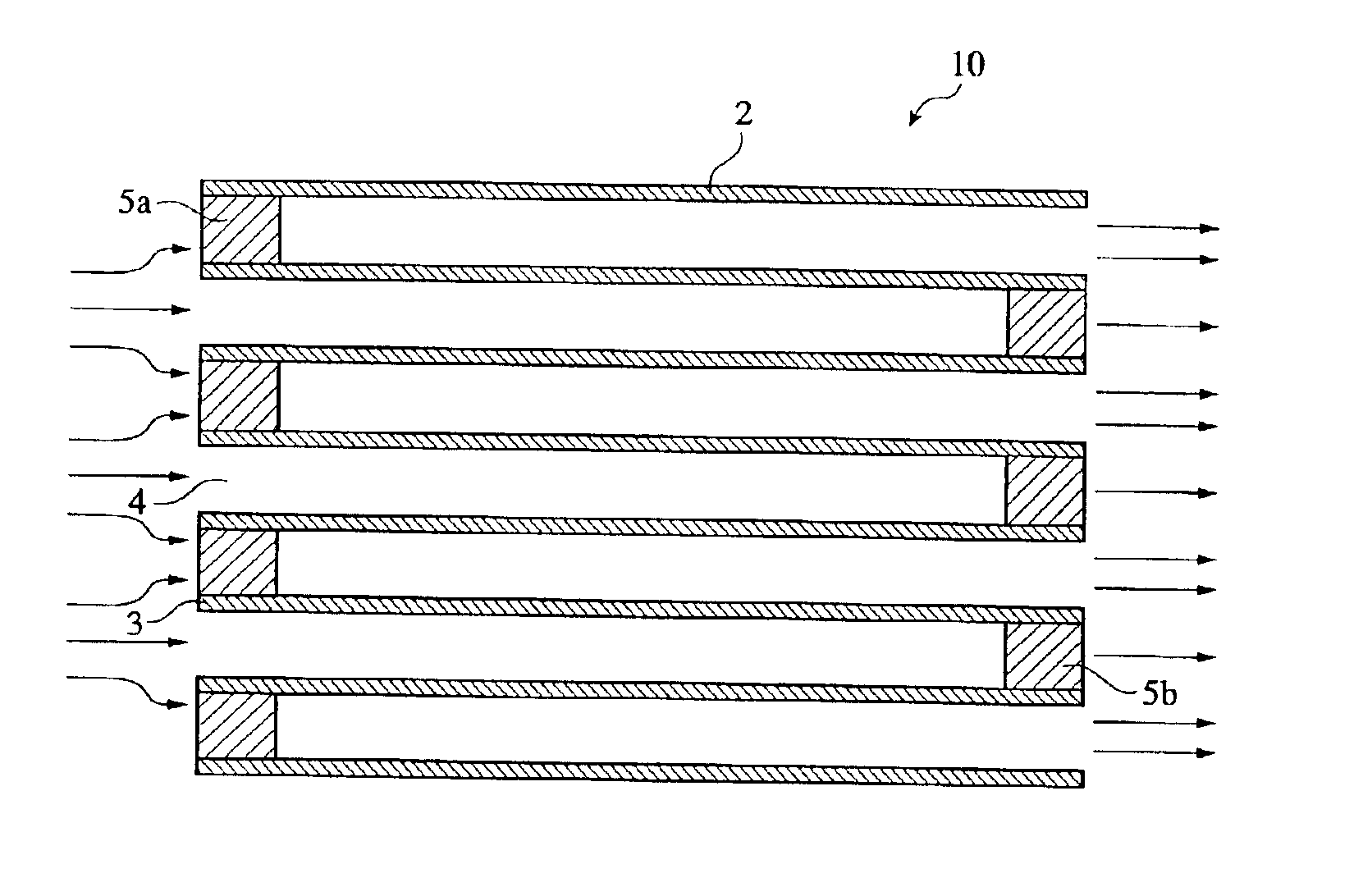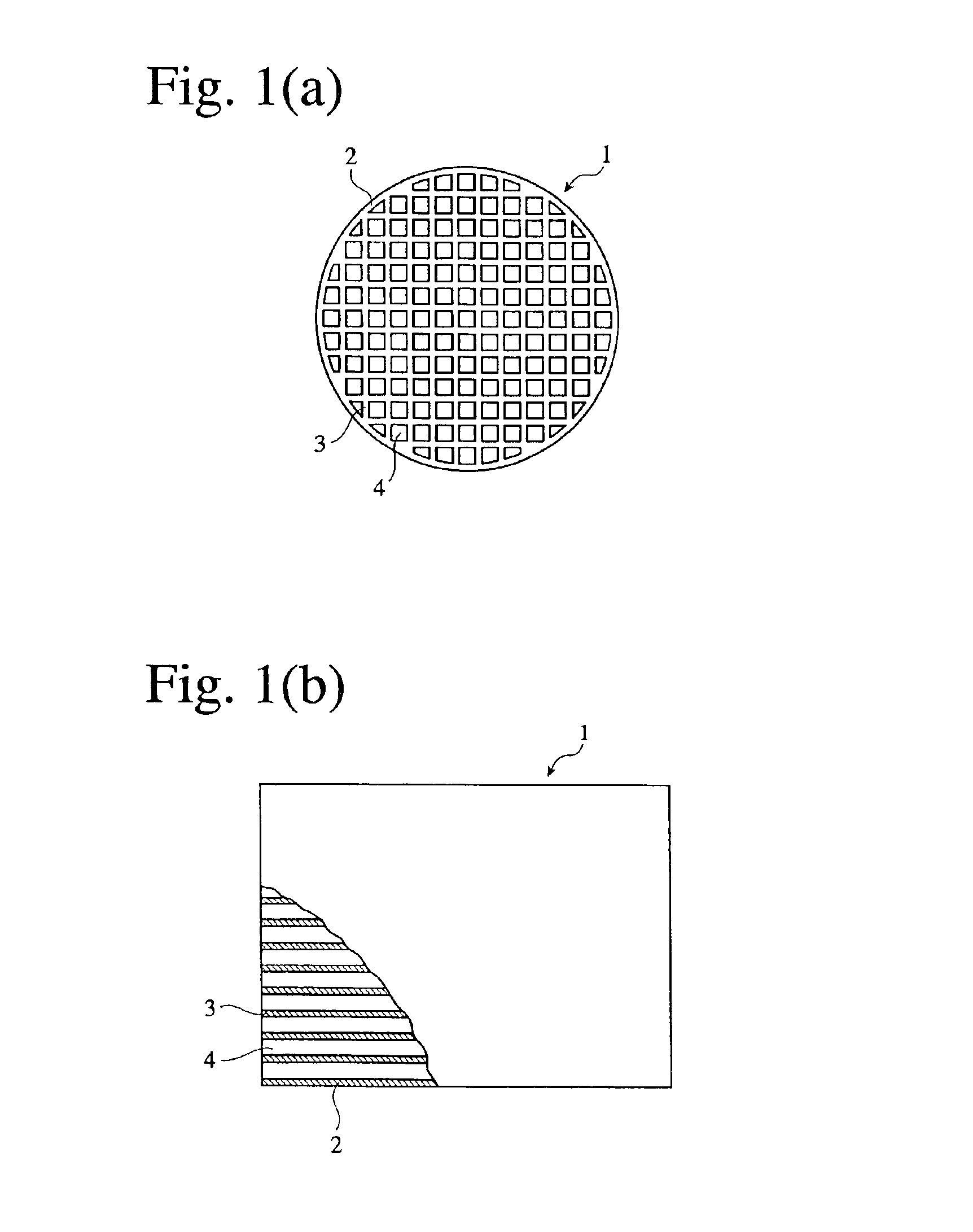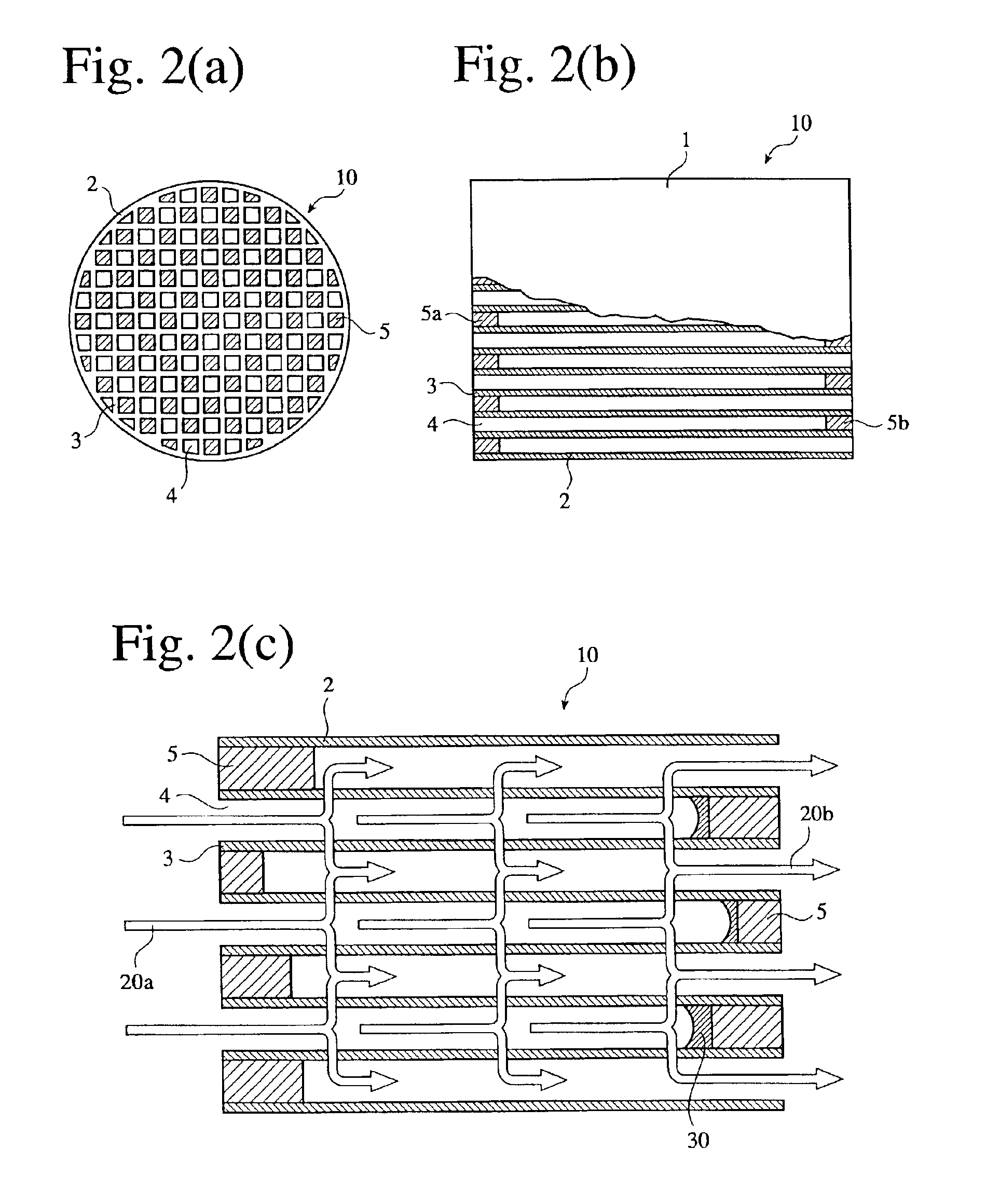Ceramic honeycomb filter and its structure
a honeycomb filter and honeycomb technology, applied in the field of honeycomb filters, can solve the problems of low breakage resistance of the filter, increase the pressure loss, and reduce the strength of the partition wall, so as to reduce the pressure loss and reduce the breakage resistance
- Summary
- Abstract
- Description
- Claims
- Application Information
AI Technical Summary
Benefits of technology
Problems solved by technology
Method used
Image
Examples
first embodiment
[1] First Embodiment
[0050]In the first embodiment, the ceramic honeycomb structure has a porosity of 50-80%, relatively large-diameter pores, specifically pores having cross section areas of 1,000μm2 or more in partition walls, contain those having substantially circular cross sections. This reduces the percentage of the number of pores having acute corners, making it unlikely that stress concentration occurs in the corners of pores, and thus resulting in improvement in the strength of the ceramic honeycomb structure. The term “pores are substantially circular” in partition walls means that the roundness represented by the formula of length of circumference×length of circumference / (4π×area of pore) is within a range of 1-10. In the case of a circle, the roundness is 1, and the roundness becomes larger as the cross section shape of a pore becomes deviated from a circle.
[0051]When the porosity is less than 50%, the ceramic honeycomb structure has a large pressure loss when used as a d...
second embodiment
[2] Second Embodiment
[0057]In the second embodiment, the partition walls of the ceramic honeycomb filter have thickness of 0.1-0.5 mm and a porosity of 50-80%, the porosity of sealers is larger than that of partition walls, and the seal depth is 3-15 mm. This structure can satisfy two contradictory requirements of a low pressure loss and an excellent breakage resistance. Specifically, because partition walls have thickness of 0.1-0.5 mm and as high porosity as 50-80%, the exhaust gas passes through the partition walls with low resistance (pressure loss). Also, with the porosity of sealers larger than that of partition walls and with the seal depth of 3-15 mm, part of the exhaust gas passes through the sealers, resulting in decrease in pressure loss. Further, because the sealers have a small thermal capacity per a unit area, the sealers is unlikely to suffer from cracking even with a thermal shock.
[0058]Specifically, the porosity of sealers is larger than that of partition walls pref...
third embodiment
[3] Third Embodiment
[0066]The partition walls of the ceramic honeycomb structure in the third embodiment have nonuniform thickness. As shown in FIGS. 5(a) to5(c), for instance, the partition walls 3a, 3b of the ceramic honeycomb structure 1 have different thickness in a transverse cross section. Because the partition walls 3 has nonuniform thickness, partition wall intersections 3c have different strength from cell to cell, not constant in the ceramic honeycomb structure. Because no partition wall intersections 3c having substantially the same strength exist continuously, it is possible to prevent a phenomenon that cracking propagates continuously along the partition wall intersections 3c by thermal shock or stress, so that the ceramic honeycomb structure is broken in a diagonal direction of cells. Thus, this ceramic honeycomb structure has excellent thermal shock resistance. Incidentally, because the partition wall intersections 3c shown in FIG. 5(c) have curved surfaces, it is adv...
PUM
| Property | Measurement | Unit |
|---|---|---|
| porosity | aaaaa | aaaaa |
| depth | aaaaa | aaaaa |
| areas | aaaaa | aaaaa |
Abstract
Description
Claims
Application Information
 Login to View More
Login to View More - R&D
- Intellectual Property
- Life Sciences
- Materials
- Tech Scout
- Unparalleled Data Quality
- Higher Quality Content
- 60% Fewer Hallucinations
Browse by: Latest US Patents, China's latest patents, Technical Efficacy Thesaurus, Application Domain, Technology Topic, Popular Technical Reports.
© 2025 PatSnap. All rights reserved.Legal|Privacy policy|Modern Slavery Act Transparency Statement|Sitemap|About US| Contact US: help@patsnap.com



